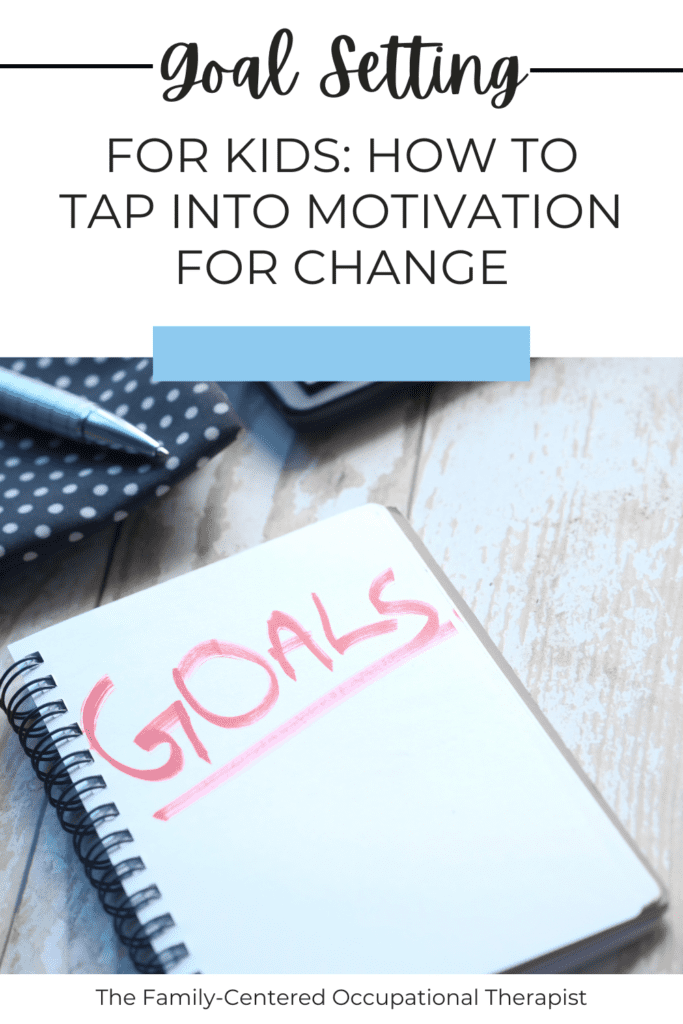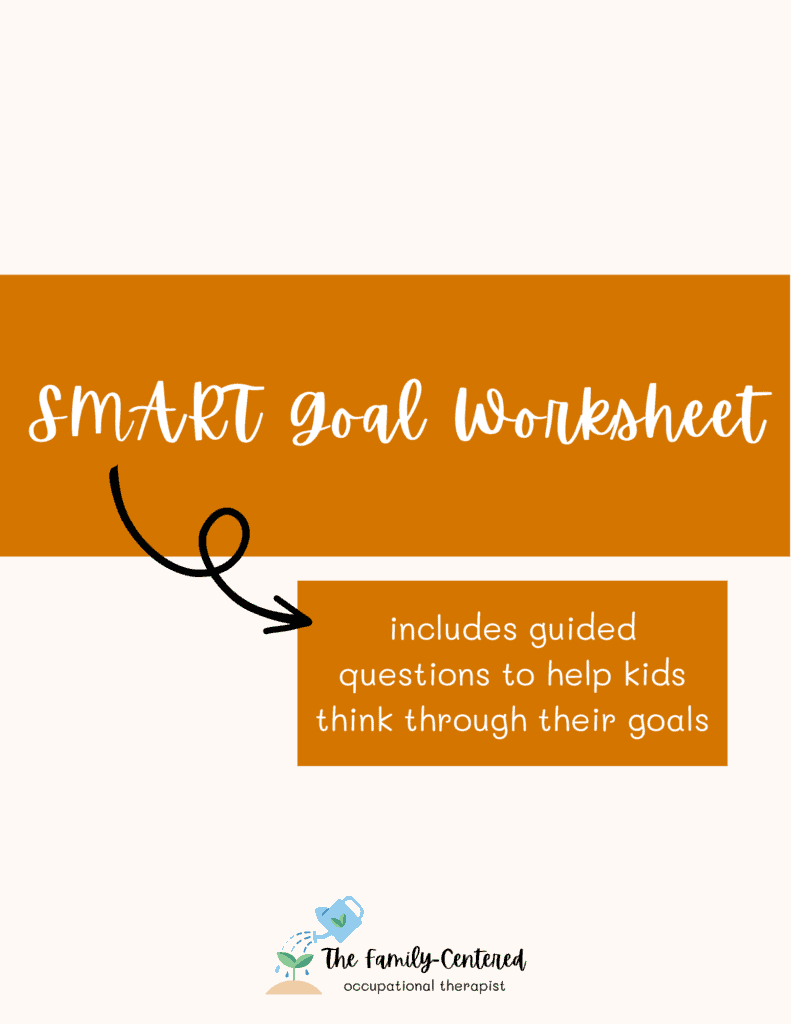Sometimes it can be hard to get a kid motivated to work on a challenge they’re having. This becomes even more true as kids get older. As we all set our resolutions for the new year, we can take advantage of this time and involve our kids in setting their own goals and resolutions. And, if we’re clever about it, we can help them connect their goals to the challenges that they’ve been having.
Helping your child set appropriate goals varies by age and cognitive stage. Keep that in mind when you’re reading this post. The most important thing is to meet your child where they’re at to make this a successful activity.
The process of goal setting with kids
By this point, many of us have heard about SMART goals. If not, this is an acronym that we can use to help set measurable, achievable goals.
- S – specific
- M – measurable
- A – achievable
- R – relevant
- T – timely
When setting goals with kids, I like to use a worksheet I designed to help parents ask meaningful questions. You can download it for free here.
How do you start a goal setting conversation?
Start by giving your own examples. For instance, you might say that this year mom is working on eating more vegetables. Make sure your example is real, because children can sense when you’re not being genuine. But you also need to ensure it is child-appropriate. For example, saying that you want to lose weight may not be great for a child’s self-image. However, you might use the example of wanting to add more vegetables to your diet or move more after meals.
Make sure to add your why. Tell your child – again, in a child-appropriate manner – why this goal is important and meaningful to you. For example, you might say that you want to eat more vegetables to have more energy at work. Or, you might want to face a fear. In that example, explain that this will allow you to do something you otherwise would not have been able to.
After you’ve provided an example, ask your child what things they want to achieve. You can use this worksheet to help. Younger children might need specific prompts or examples, or maybe even choices.
How to adjust the SMART goal framework by age
Delayed gratification can be really difficult for younger kids, so guide them to goals that can be completed a few days later. If they come up with a really grand goal, you should help them break it down into smaller parts. For example, if they want to ride a bike, you might want to start with getting a bike, or practicing peddling as their goal.
Help guide your child to ensure that the goal is realistic. Again, this might involve something along the lines of saying “wow, that’s a great goal! I think that might be tricky to accomplish right away, I wonder if there are other steps that can help lead us there instead?”

Making the connection between your child’s goal and areas of challenge
This is the part where you need to get creative. But fear not, because you’ve just tapped into the most important part of facing a challenge – motivation! Your child’s goal is, ideally, something that they are very motivated to achieve. Now, you have to help make the connection between this thing that they really want and the things that you’re seeing challenges with.
For example, maybe your child decides their goal is to run for student counsel. There are a lot of really great connections you can help them make. If they are struggling with executive functions, help them realize that they need to be able to plan ahead and stay organized in student counsel. If they have tactile challenges (AND it bothers them, not just you), remind them that they might want to wear a suit or tights to look their best on election day.
Maybe your child is having feeding challenges, but they want to join a travel soccer team this year. In that case, you can remind them that they will need to find foods that they can eat while on the road.
These are just a few examples of ways to help your children connect their dreams and desires to motivation to grow and better themselves. However, it is also totally reasonable for your child not to quite be ready for making these changes just yet, and it is your job as a parent to respect that (within reason, of course). Ultimately, goal setting is a great way to learn more about your child’s dreams and desires and gives your child a sense of accomplishment as you help them track it.
Do NOT use goal setting to push a neurotypical perspective on your child
Connecting goals to challenges should be a way to help your child understand the impact of their challenges. It should not be a way of pushing an agenda. If your child is showing a great deal of pushback on the connection you make, then maybe you need to reassess. Maybe they’re not quite ready yet for this change, or maybe it doesn’t matter enough for them. Or, as in the example of needing to wear a suit for running for student counsel, maybe they feel like they should be able to be themselves when they run.
The best way to make goal setting and facing challenges successful and meaningful for your child is to ensure that the challenges actually bother them, too. If you’re the one who wants your child to wear jeans and they couldn’t care less, then that is more of your agenda than it is theirs. However, if they’ve been wanting a haircut for a while but can’t quite face it yet, then that’s an appropriate challenge to help them address.
Please see the OT butterfly for more information on how to talk with your child about their neurodiversity.
As always, please contact me with any questions as you set out on this goal setting journey!


